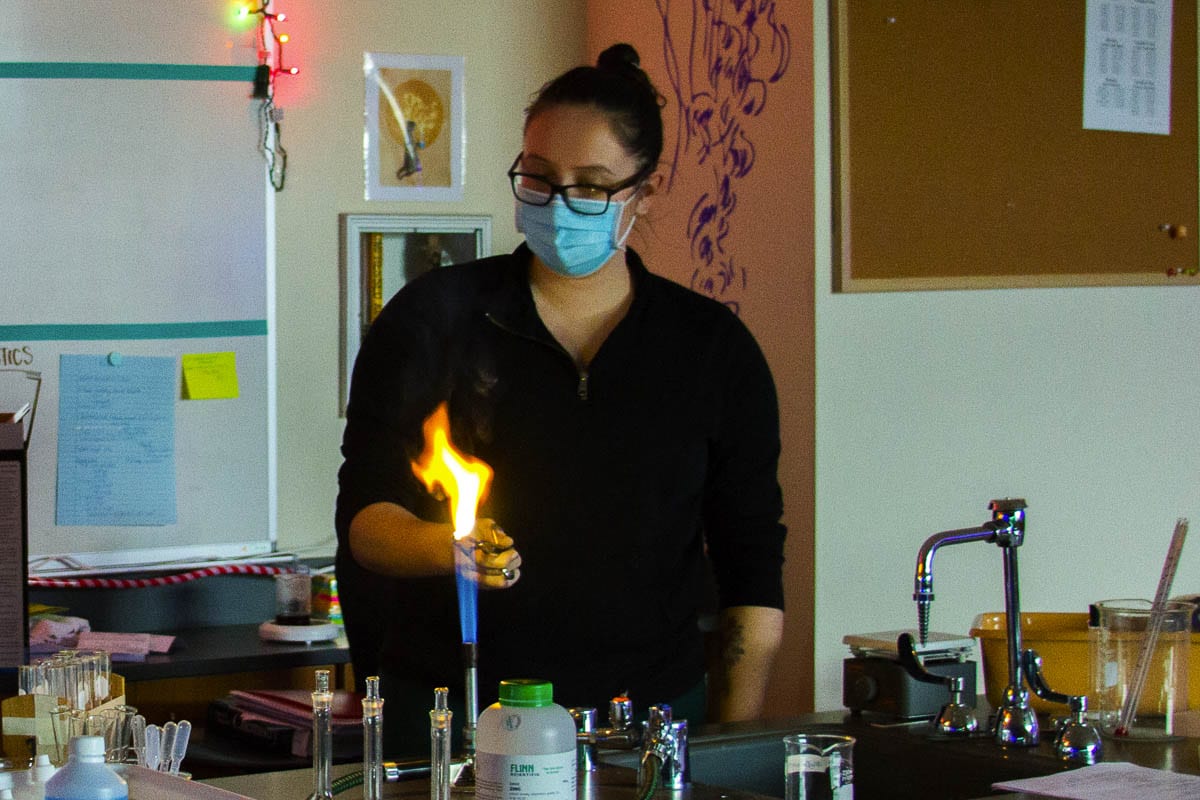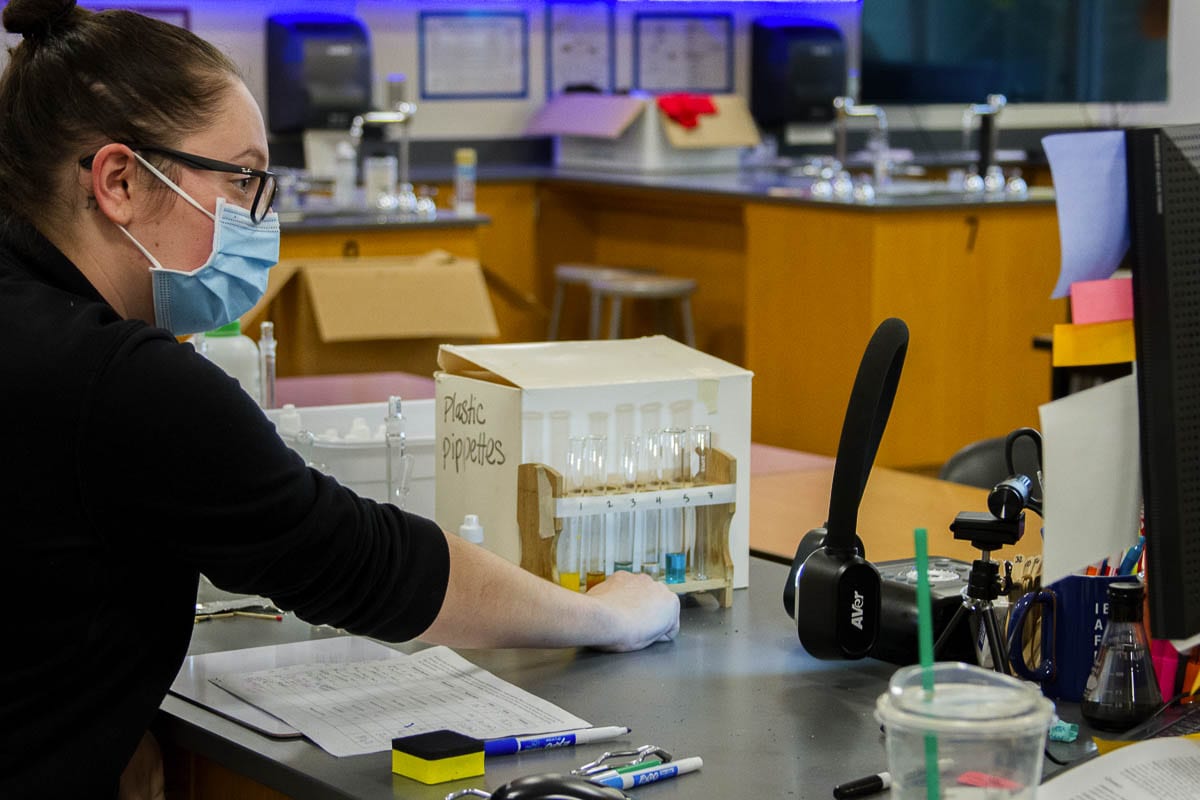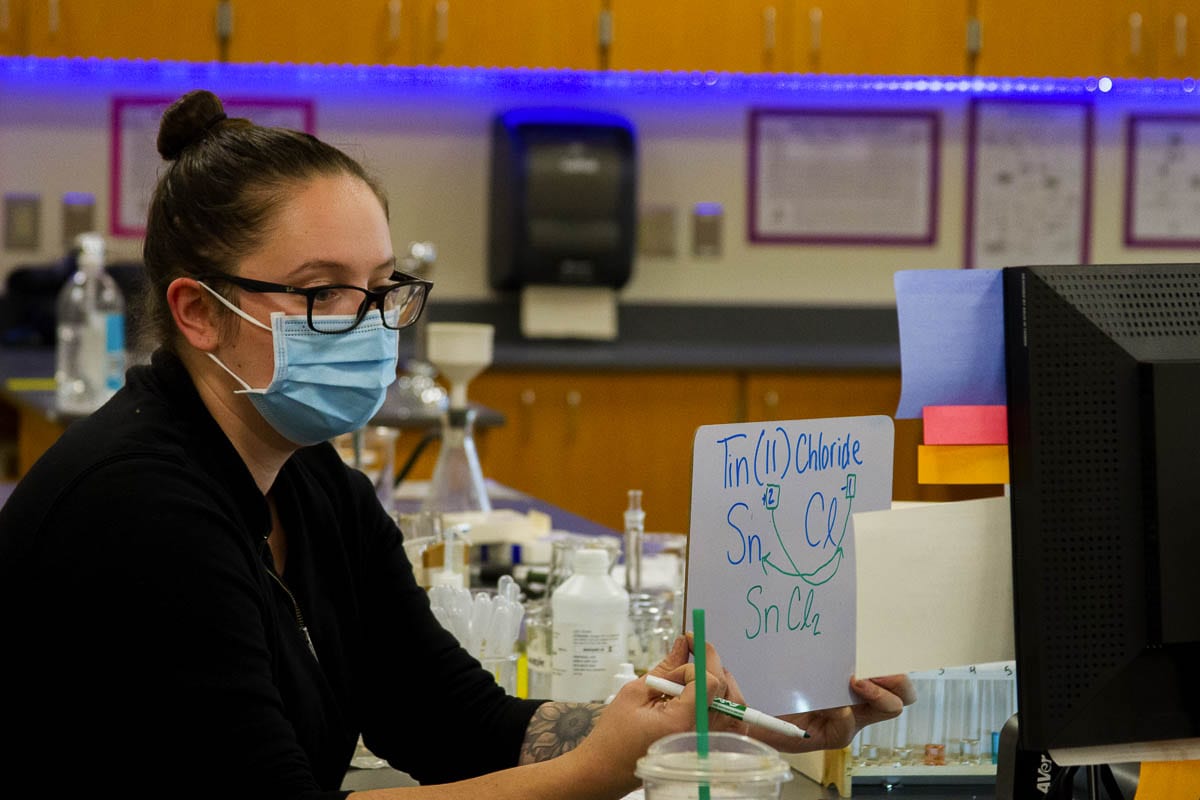Stephanie Marshall develops unique ways to involve students in vivid science lab experiments without the ability to attend school in-person
During science classes, teachers use labs and experiments to engage students and improve learning by demonstrating concepts in action. However, with Woodland’s high school students learning fully remotely due to the pandemic, Stephanie Marshall, a science teacher at Woodland High School, develops unique ways to involve students in vivid science lab experiments without the ability to attend school in-person.

To make science labs happen remotely, Marshall had to figure out how to involve students with the experiments without being able to conduct the labs themselves. “Labs are such a huge part of the chemistry curriculum that I didn’t want to have students miss out on them during the pandemic,” said Marshall. “I realized that I could walk the students step-by-step with me as I conducted the labs and involve them by having them hypothesize about what would happen before I took another step in the lab, intentionally making a mistake they need to catch, and encourage them to participate the entire time.”
Marshall uses multiple Internet-connected video cameras to teach her classes and conduct the labs. A webcam points at Marshall while she walks students through creating scientific formulas, performing compound formula math, and teaches the lessons and concepts. A second camera, a high-resolution camera typically used to display documents for entire classes to see, closely focuses on the experiments themselves which take place in beakers, test tubes, and Bunsen burners so students can see the chemical reactions taking place close-up and in real-time.
Marshall also makes sure to create extremely vivid and sometimes volatile labs so students can both easily see the experiment remotely and to increase student engagement in the lesson. “Since I am conducting the experiment and not the students, I can perform more advanced experiments than high school students typically would in order to demonstrate the concepts the students are learning while also really engaging them; I try to get some of that ‘wow’ chemistry,” she explained. “In fact, my goal is to light something on fire in a science lab at least once each week; if I don’t, students will actually point out that I haven’t lit anything on fire in a while!”

During the science labs, Marshall directs the students to explain why different reactions happen, focus on making detailed observations, and to hypothesize about potential outcomes before they happen. “Sometimes, I intentionally make mistakes just like students would in-class to test if my students catch the mistake when they work on the assignment,” she said. “If they don’t catch the mistake I made, their results will come out wrong and they’ll need to revisit the lesson, further deepening the learning taking place.”
During an experiment where Marshall mixed chemicals resulting in a variety of outcomes, students wrote detailed notes about the results including the end state of a mixture (gas, liquid or solid), what color reactions could indicate about the product, and, of course, the potential flammability of certain end results. The climax of the lab involved Marshall lighting magnesium on fire with a Bunsen burner resulting in a large and colorful flame.
Remote learning presents incredible challenges for all teachers, particularly for subjects that involve a lot of hands-on work like science and math. “I used to walk around and check on how students were doing with practice problems, correcting mistakes in real-time and specifically helping students who might be struggling with the material,” said Marshall. “Not being able to do that remotely makes a big difference as that guidance can have huge effects on student learning.”
However, remote learning provided Marshall with a few silver linings. “When we’re in class, I can’t do advanced labs all the time – with a classroom filled with 30 kids, I’m not going to light something on fire every day,” she said. “Also, I get to intensely work with small groups of seven kids or less for 30 minutes at a time during remote learning; getting to focus intently with these small groups encourages students to participate because they’re more familiar with one another and more comfortable making guesses or answering questions.”

Ensuring students attend class and engage with the material remain the top priorities for Marshall during remote learning.
“Chemistry is cool and I love it, but one of my biggest goals for my students is to truly engage them so they keep coming back and keep learning,” she said. “Even during remote learning, student attendance to my labs is nearly 100 percent every week which is great because I’m basically putting on a show where they get to learn.”
Learn more about how Woodland Public Schools educates students and serves the community, by visiting our dedicated news webpage at www.woodlandschools.org/news/wsd
Stay informed with the latest updates about the eventual transition from remote learning to in-person learning and more about COVID-19 at Woodland Public Schools’ dedicated website: www.woodlandschools.org/covid-hq
Information provided by Woodland School District.




